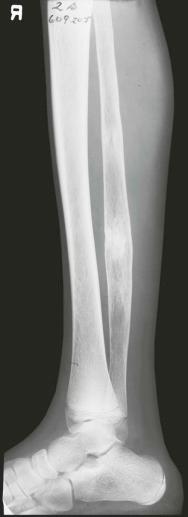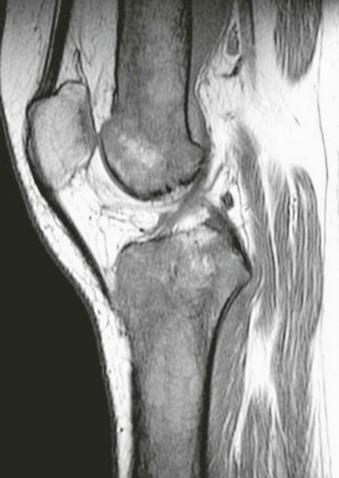Physical Address
304 North Cardinal St.
Dorchester Center, MA 02124
Sickle cell anemia, first described in a 20-year-old dental student from Grenada by Herrick in 1910, is the most common single-gene disorder in African Americans. Dr. Linus Pauling and his team identified the cause of SCA as a single substitution in the gene encoding of the β-hemoglobin (Hb) chain (valine substituted for glutamic acid). An individual with two abnormal chromosomes was designated as Hb SS and manifested the major clinical features of SCA. The person with one normal and one sickle cell β-globin chain, designated as Hb SA, was a carrier of the gene and had the sickle cell trait. This genetic mutation has survived in Africa by natural selection because affected individuals have resistance to malaria.
The overall designation of SCA refers to any patient with at least one Hb S chain and one other abnormal β-globin chain. If this is another sickle cell β-globin chain, the individual is homozygous for Hb SS and by definition has SCA, Hb SC, or one of the thalassemias (e.g., Hb S-thal). Hb SS accounts for 60% to 70% of the cases of the disease in the United States, and these individuals have the most severe manifestations of the disease. Individuals with Hb SA (one abnormal sickle cell gene designated S and one normal hemoglobin gene designated A or the sickle cell trait ) generally have a more benign clinical course without the vasoocclusive complications and have fewer musculoskeletal abnormalities. Hb S reduces the susceptibility to malaria ( Plasmodium falciparum infection) in a dose-dependent manner. Therefore, a patient with homozygous Hb SS is more resistant to the infection than a patient with heterozygous Hb SA. However, individuals with sickle cell trait are at a higher risk for developing medullary carcinoma of the kidney. There are other rarer combinations of the sickle cell gene, but none of these has significant clinical sequelae.
The second most common disorder in which hematopoietic cells assume a sickle cell shape is Hb C disease. These patients have two normal α and two variant β chains. Because the amount of Hb S is generally less than 50%, these individuals have a relatively benign form of hemolytic anemia that clinically is manifested by sporadic joint pain, pigmented gallstones, retinopathy, and splenomegaly.
The aberrant hemoglobin cells of a patient with sickle cell disease have a life span approximately one fifth of that of normal hemoglobin cells. Therefore, these sickle cells are continually removed from the circulation and destroyed at an increased rate, resulting in anemia. Therefore, SCA is characterized as one of the many hemolytic anemias. Furthermore, Hb S, when deoxygenated, exhibits decreased solubility and forms long aggregates with other hemoglobin molecules within the red blood cells. These molecules distort the red blood cells into the characteristic sickle-shaped cells, which have a tendency to adhere to the endothelial wall and impair blood flow. The resultant vascular occlusion in various organ systems is believed to be the etiology for the most identifiable manifestations of this disease.
Affecting 1 in 375 blacks in the United States, SCA is present in about 0.15% of the black U.S. population. Approximately 1 in 12 Americans of African descent carries the heterozygous sickle cell trait. SCA, however, can also be seen in many ethnic groups, particularly those from the Mediterranean basin (Turkey, the Arabian peninsula) and the subcontinent of India. Because of migration, the disease can also be found in the Caribbean and South and Central Americas.
The most common clinical scenario seen in SCA is recurrent acute, painful vasoocclusive crises thought to be secondary to microvascular occlusion with organ and tissue ischemia. Almost 40% of patients with SCA experience at least one crisis before 5 years of age. In young patients, these episodes most commonly present as dactylitis of the hands, fingers, feet, and toes (so-called hand-foot syndrome). Table 74-1 outlines the major clinical features of SCA. The five IN s of this disease, listed in Table 74-2 , represent the major consequences of this disorder.
| Osteonecrosis (multiple sites) |
| Infarction |
| Diaphyseal |
| Medullary |
| Epiphyseal |
| Infection |
| Osteomyelitis |
| Septic arthritis |
| Fractures |
| Crystal deposition |
| Splenic infarction (involution) |
| Splenic sequestration |
| Acute chest syndrome (lung infarction) |
| Papillary necrosis |
| Renal insufficiency |
| Stroke |
| In sufficient ossification (marrow hyperplasia) |
| In farction |
| In fection |
| In failure (because of the anemia) |
| In volution (of spleen) |
As with many diseases of the musculoskeletal system, the initial imaging evaluation is radiography. The radiograph gives an overview of the osseous structures and can show areas of bone resorption or proliferation. If clarification of osseous findings suspected on the radiograph is required, CT can be used as the next imaging study because this technique shows cortical bone to advantage. The actual clinical setting determines which technique is most appropriate after the radiograph. For patients with a high clinical suspicion of pathology who have normal radiographs and CT, MRI or radionuclide bone scanning can be used. In suspected infarction, MRI or radionuclide bone scanning may be used. MRI, although more expensive, can identify the infarction at an earlier stage and has the spatial resolution to identify other possible causes of the patient's symptoms. If soft tissue or osseous infection (osteomyelitis) is suspected clinically, gadolinium-enhanced MRI is the most appropriate modality after radiography. If a survey of the osseous structures is required, radionuclide bone scanning is the most accepted modality at this time, although whole-body MRI, although not widely used, has been reported to show promise in this setting.
The skeletal features of SCA are changes in bone and bone marrow caused by tissue hypoxia from the intermittent episodic occlusion of the microcirculation by the individual's sickled cells. The major imaging findings are compensatory bone marrow hyperplasia, infarction of bone and bone marrow, secondary osteomyelitis, and secondary growth aberrations.
Because the bone marrow is the primary source for hematologic cells, it is rational to assume that any disease resulting in an increased turnover of these cells will have an effect on this organ. In normal patients, there is a gradual conversion of red (hematopoietic) marrow to yellow (fatty) marrow, a process that begins at the distal appendicular skeleton in early childhood. This process is usually completed by the second decade of life, and, in adults, this red marrow generally remains in only the sternum, pelvis, ribs, and vertebrae. The epiphyses remain as fat-containing structures throughout life in normal individuals. The shortened survival of erythrocytes in patients with SCA (10 to 20 days) leads to the imaging findings outlined in Table 74-3 .
| Osteopenia |
| Coarsened or accentuated trabecular pattern |
| Increase in the size of vascular channels |
| Widened medullary spaces |
| Cortical thinning |
| Loss of the normal diaphyseal constriction |
Radiographic changes include osteopenia, a coarsened or accentuated trabecular pattern, and widening of the medullary spaces with resultant cortical thinning and loss of the normal diaphyseal constriction in the long bones ( eFig. 74-1 ). All patients with SCA do not necessarily manifest all of these features. However, all patients with SCA have, in general, one or two of these imaging findings, which are best seen on radiography. Rarely, patients with SCA may show diploic widening secondary to marrow hyperplasia in the calvaria (the “hair-on-end” appearance), but this calvarial finding is much more common and characteristic of thalassemia, a disease that is discussed in the section on differential diagnosis.

Magnetic resonance imaging can demonstrate the replacement of fatty marrow with hematopoietic marrow, and the persistence of red marrow may make detection of infarction or infection more difficult ( eFig. 74-2 ). Rarely, extramedullary hematopoiesis is encountered but is much more common in thalassemia.

Multidetector CT will confirm the findings of osteopenia, a coarsened or accentuated trabecular pattern, and widening of the medullary spaces with resultant cortical thinning and loss of the normal diaphyseal constriction in the long bones but is not needed for the detection of these features because the radiograph suffices.
There is no role for ultrasonography in the evaluation of bone marrow changes of SCA.
There is no role for nuclear medicine in the evaluation of bone marrow changes of SCA.
Become a Clinical Tree membership for Full access and enjoy Unlimited articles
If you are a member. Log in here